 The frequencies 1781.7-1785MHz paired with 1876.7-1880MHz known as the GSM Guard bands have been made available to 12 licensees under the Wireless Telegraphy Act. They are national UK licenses, though the operators of the licenses will have to cooperate amongst themselves so that interference between themselves doesn’t occur. Ofcom expect the licensees to form an industry body that will self-regulate. Operators will also be required to register all radio equipment in the “Sitefinder” database (currently populated by the GSM and 3G operators).
The frequencies 1781.7-1785MHz paired with 1876.7-1880MHz known as the GSM Guard bands have been made available to 12 licensees under the Wireless Telegraphy Act. They are national UK licenses, though the operators of the licenses will have to cooperate amongst themselves so that interference between themselves doesn’t occur. Ofcom expect the licensees to form an industry body that will self-regulate. Operators will also be required to register all radio equipment in the “Sitefinder” database (currently populated by the GSM and 3G operators).
Even though the licenses are only low power (sub 200mW compared to 10’s of Watts for traditional GSM systems), they are suitable for services such as in-building GSM, local area GSM (such as in a theme-park) or other constrained areas. There are 15 GSM channels available, each one being able to carry 8 voice calls i.e. 120 voice calls in total. Having a reasonable number of channels will allow multiple operators to co-exist in an area and also allow single operators to cover larger areas (in such a way that multiple GSM basestations won’t interfere with each other).
Though it is expected the main use will be low power GSM, Ofcom have not specified what the licenses should be used for and as such, can be utilised for any service, such as localised wireless broadband, as long as the GSM spectral masks are adhered to (which will ensure interference doesn’t occur with the existing GSM operators).
 Winning Licensees
Winning Licensees
The 12 companies winning licenses and the prices they paid were: – (note all bids in GB pounds £)
| British Telecommunications PLC | 275,112 |
| Cable & Wireless UK ( England) | 51,002 |
| COLT Mobile Telecommunications Ltd | 1,513,218 |
| Cyberpress Ltd | 151,999 |
| FMS Solutions Ltd | 113,000 |
| Mapesbury Communications Ltd | 76,660 |
| O2 ( UK) Ltd | 209,888 |
| Opal Telecom Ltd | 155,555 |
| PLDT ( UK) Ltd | 88,889 |
| Shyam Telecom UK Ltd | 101,011 |
| Spring Mobil AB | 50,110 |
| Teleware PLC | 1,001,880 |
Ofcom published the complete matrix of bids as the award was for between 7 and 12 licenses. It was a close thing at 8 licenses as a few bidders put in high entries for low numbers of licenses and dropped the amount as the license numbers increased.
Ofcom arranged the auction in a sealed bid process in a “what you bid is what you pay” arrangement, which lead to the lowest price paid as £50,110 by Spring Mobil and the highest £1,513,218 by COLT (30x as much). Some have argued that the highest bidders paid over the odds, but they are putting a good spin on it saying that it’s in-line with their mobile strategy. The total amount of the licence fees paid was £3.8million, not bad for Ofcom’s first spectrum auction.
Of course, compared to the license fees paid for 3G spectrum (around £6bn per license) it’s peanuts.
A license, but what to do with it?
Having a license is all very well, but now licensees must be wondering what they’ve got themselves into. Just because they can run a GSM service doesn’t mean anyone will use it, in fact it may well be difficult to get people onto your network.
It’s extremely unlikely the existing mobile operators are going to want to have anything to do with these new upstarts, they’ve invested millions (err, billions) to get to where they are today. The last thing they want is new entrants poaching customers or moving users off their networks when they move into, say, an office environment. They especially don’t want their customers doing it with equipment (i.e. handsets) that they’ve heavily subsidised.
Unfortunately, what this means is that the new players are going to have to issue new SIMs (Subscriber Identity Modules) and they won’t work on existing GSM networks, or users will manually have to select the new network when they’re in range. This makes it all very difficult, and users won’t bother if it’s hard.
 New entrants could enter into roaming agreements with the current operators, but unless Ofcom mandates this (which is unlikely) there’s likely to be strong opposition. Since some of the license winners already have GSM networks, they can offer localised services knowing there’s no interference problems with existing infrastructure.
New entrants could enter into roaming agreements with the current operators, but unless Ofcom mandates this (which is unlikely) there’s likely to be strong opposition. Since some of the license winners already have GSM networks, they can offer localised services knowing there’s no interference problems with existing infrastructure.
Deals with foreign GSM operators?
One way ahead is for a licensee to make an agreement with a foreign operator and the localised network just becomes an extension of their foreign network, but then when users roam on to the network they’ll be subject to roaming charges which, as both Ofcom and the EU Government know too well, can mean very high charges for the end-user. If roaming charges do decline then this may well be a way forward.
There’s also a big potential opportunity for the Channel Islands GSM networks here, as they abide by UK numbering plans, so though they are considered “foreign”, their numbers look like UK numbers, including mobile ranges. They could offer roaming agreements and even offer SIMs which would still look like UK numbers.
So the future’s bright, but it will be an interesting few years to see if any of the new entrants can really pull anything off.
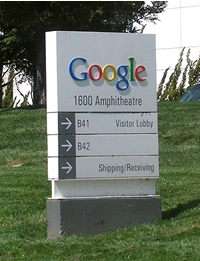 Google took the opportunity of their annual press briefing at the Googleplex to inform the assembled hacks of four new applications. The theme they were trying to push was ‘honest we _are_ a search company.”
Google took the opportunity of their annual press briefing at the Googleplex to inform the assembled hacks of four new applications. The theme they were trying to push was ‘honest we _are_ a search company.” There’s also a feature to compare two search terms, our favourite so far being good vs evil (glad to see good winning). Breakdowns that can be further explored are cities, regions and languages.
There’s also a feature to compare two search terms, our favourite so far being good vs evil (glad to see good winning). Breakdowns that can be further explored are cities, regions and languages. Google Desktop 4 & Google Gadgets
Google Desktop 4 & Google Gadgets Sky News are very proud of what they’re billing as the Highest Ever Video News Podcast (or HEVNP to all of you acronym manufacturers out there).
Sky News are very proud of what they’re billing as the Highest Ever Video News Podcast (or HEVNP to all of you acronym manufacturers out there). What kit to take to Everest?
What kit to take to Everest? The video is being shot on two cameras, both Sony’s, the HVR-Z1, or Z1 as it’s know in the trade and the HVR-A1 (A1), having the advantage that it’s really small – pretty useful when you’re having to lug it up Everest.
The video is being shot on two cameras, both Sony’s, the HVR-Z1, or Z1 as it’s know in the trade and the HVR-A1 (A1), having the advantage that it’s really small – pretty useful when you’re having to lug it up Everest.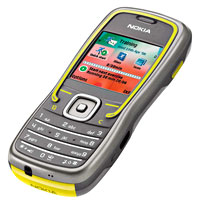 For hyperactive sporty types, lardy lumps looking to lose some weight and headband-totin’ workouters, Nokia has trotted out its new super-sporty phone, the 5500 Sport.
For hyperactive sporty types, lardy lumps looking to lose some weight and headband-totin’ workouters, Nokia has trotted out its new super-sporty phone, the 5500 Sport.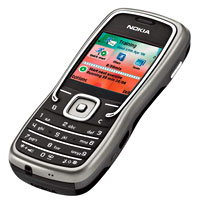 Jog the line
Jog the line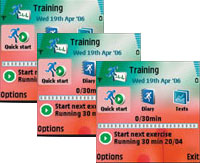 Music on the go
Music on the go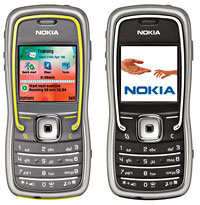 Conveniently, there’s a dedicated key that makes it easy to switch between phone, music and training modes with text to speech software feeding you text messages and workout status reports on the move.
Conveniently, there’s a dedicated key that makes it easy to switch between phone, music and training modes with text to speech software feeding you text messages and workout status reports on the move.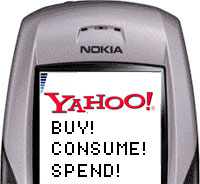 Yahoo have released a report with communications company OMD today that looks into how the Internet influences peoples shopping habits. Not surprisingly it covers online purchases, but far more interesting is how people are using the Internet and other technology to inform their ‘real-world’ purchases.
Yahoo have released a report with communications company OMD today that looks into how the Internet influences peoples shopping habits. Not surprisingly it covers online purchases, but far more interesting is how people are using the Internet and other technology to inform their ‘real-world’ purchases.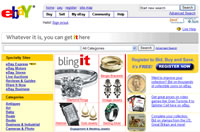
 Having come from a communications agency, this report, “Long and Winding Road: The Route to the Cash Register”, won’t surprise you in using all sorts of language in a way that hasn’t ever been seen in English before. They’ll also grab hold of words that you have heard before and use them to create comfortable categories. Oh and tell you things that really are patently obvious but wrap them up in a different way ….
Having come from a communications agency, this report, “Long and Winding Road: The Route to the Cash Register”, won’t surprise you in using all sorts of language in a way that hasn’t ever been seen in English before. They’ll also grab hold of words that you have heard before and use them to create comfortable categories. Oh and tell you things that really are patently obvious but wrap them up in a different way ….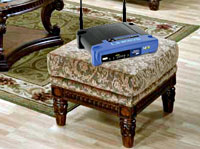 The space-age wireless house is coming ever-nearer with new figures from Strategy Analytics revealing the growth of Wi-Fi networks amongst the sofas, dining tables and four poster beds of the home.
The space-age wireless house is coming ever-nearer with new figures from Strategy Analytics revealing the growth of Wi-Fi networks amongst the sofas, dining tables and four poster beds of the home.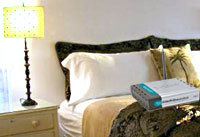 The Americans were found to be leading the world with 8.4 percent penetration, followed by the nippy Nordic region with 7.9 percent.
The Americans were found to be leading the world with 8.4 percent penetration, followed by the nippy Nordic region with 7.9 percent.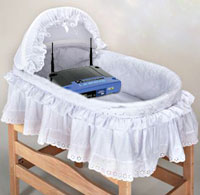 “Rich people have more electronic gadgets” shocker!
“Rich people have more electronic gadgets” shocker!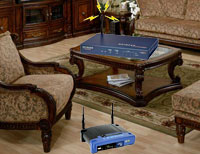 Mercer added that rising ownership of laptop PCs and other portable Internet devices will soon make Wi-Fi the dominant home networking choice for most broadband subscribers.
Mercer added that rising ownership of laptop PCs and other portable Internet devices will soon make Wi-Fi the dominant home networking choice for most broadband subscribers. UK shoppers are set to spend an average £1,000 each online in 2006, according to the yearly report by the Interactive Media in Retail Group (IMRG).
UK shoppers are set to spend an average £1,000 each online in 2006, according to the yearly report by the Interactive Media in Retail Group (IMRG). According to IMRG’s own research, usability, customer retention, and interactive marketing were cited as the biggest concerns by over half of their members, with e-crime and delivery fulfilment seen as high-priority issues by around a third.
According to IMRG’s own research, usability, customer retention, and interactive marketing were cited as the biggest concerns by over half of their members, with e-crime and delivery fulfilment seen as high-priority issues by around a third. Compare that to stingy shoppers in the south who said that they’d spend no more than £50 per month online, and wouldn’t dream of shelling out sums as high as £5,000.
Compare that to stingy shoppers in the south who said that they’d spend no more than £50 per month online, and wouldn’t dream of shelling out sums as high as £5,000. Video game kings Nintendo have opened hostilities with arch-rivals Microsoft and Sony with the unveiling of its new “Wii” console.
Video game kings Nintendo have opened hostilities with arch-rivals Microsoft and Sony with the unveiling of its new “Wii” console. The Wii will certainly be considerably cheaper that its rivals when it goes on sale later this year, with pundits predicting a price around the $250 mark – cheaper than the Xbox 360 and around half the price of the top-of-the-range PS3.
The Wii will certainly be considerably cheaper that its rivals when it goes on sale later this year, with pundits predicting a price around the $250 mark – cheaper than the Xbox 360 and around half the price of the top-of-the-range PS3. Sporting an unusual, one-handed wireless controller, the remote control-shaped Wii handset comes with motion sensors and speakers, letting users interact with games by waving their arms about and looking like a bit of a nutter.
Sporting an unusual, one-handed wireless controller, the remote control-shaped Wii handset comes with motion sensors and speakers, letting users interact with games by waving their arms about and looking like a bit of a nutter. Nintendo reckon that users will find their one-hand, noise-making controller more fun and intuitive: “Our goal is to expand the total number of people playing games,” said Nintendo president Satoru Iwata
Nintendo reckon that users will find their one-hand, noise-making controller more fun and intuitive: “Our goal is to expand the total number of people playing games,” said Nintendo president Satoru Iwata Reggie Fils-Aime, chief marketing officer at Nintendo, was even more enthusiastic, insisting that the Wii was designed so “even your mother could use it.”
Reggie Fils-Aime, chief marketing officer at Nintendo, was even more enthusiastic, insisting that the Wii was designed so “even your mother could use it.” The frequencies 1781.7-1785MHz paired with 1876.7-1880MHz known as the GSM Guard bands have been made available to 12 licensees under the Wireless Telegraphy Act. They are national UK licenses, though the operators of the licenses will have to cooperate amongst themselves so that interference between themselves doesn’t occur. Ofcom expect the licensees to form an industry body that will self-regulate. Operators will also be required to register all radio equipment in the “Sitefinder” database (currently populated by the GSM and 3G operators).
The frequencies 1781.7-1785MHz paired with 1876.7-1880MHz known as the GSM Guard bands have been made available to 12 licensees under the Wireless Telegraphy Act. They are national UK licenses, though the operators of the licenses will have to cooperate amongst themselves so that interference between themselves doesn’t occur. Ofcom expect the licensees to form an industry body that will self-regulate. Operators will also be required to register all radio equipment in the “Sitefinder” database (currently populated by the GSM and 3G operators). Winning Licensees
Winning Licensees New entrants could enter into roaming agreements with the current operators, but unless Ofcom mandates this (which is unlikely) there’s likely to be strong opposition. Since some of the license winners already have GSM networks, they can offer localised services knowing there’s no interference problems with existing infrastructure.
New entrants could enter into roaming agreements with the current operators, but unless Ofcom mandates this (which is unlikely) there’s likely to be strong opposition. Since some of the license winners already have GSM networks, they can offer localised services knowing there’s no interference problems with existing infrastructure. The BBC is making its first steps into the super-crisp world of high definition television (HDTV) with transmissions of Planet Earth and Bleak House in the new format at the end of this month.
The BBC is making its first steps into the super-crisp world of high definition television (HDTV) with transmissions of Planet Earth and Bleak House in the new format at the end of this month. HD TV broadcasts can also beef up the whole big match experience by incorporating 5.1 surround sound and displaying the (Rooney-less) stadium action in widescreen.
HD TV broadcasts can also beef up the whole big match experience by incorporating 5.1 surround sound and displaying the (Rooney-less) stadium action in widescreen.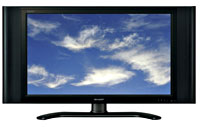 “We really feel that high definition will be the standard definition of the future,” she added.
“We really feel that high definition will be the standard definition of the future,” she added. Sony has announced the pricing for its eagerly anticipated next generation PS3 console at a pre-E3 conference in Los Angeles.
Sony has announced the pricing for its eagerly anticipated next generation PS3 console at a pre-E3 conference in Los Angeles.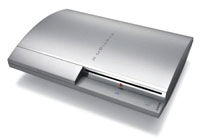 There’s certainly a lot at stake for Sony, with the company expected to lose several hundred dollars per unit – while hoping to rake in fat profits from software sales over the life of the console.
There’s certainly a lot at stake for Sony, with the company expected to lose several hundred dollars per unit – while hoping to rake in fat profits from software sales over the life of the console.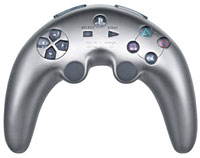 The company expects two million of the puppies to have shunted off their production line and into the shops during the ‘launch window,’ four million by the end of the year and six million worldwide by March 31, 2007.
The company expects two million of the puppies to have shunted off their production line and into the shops during the ‘launch window,’ four million by the end of the year and six million worldwide by March 31, 2007.